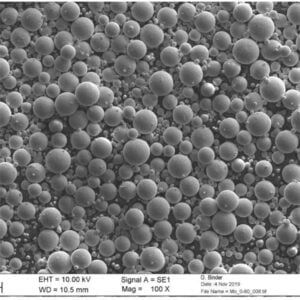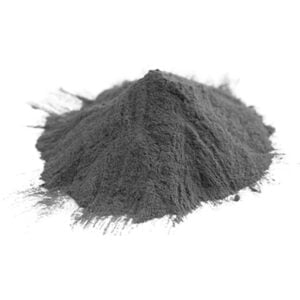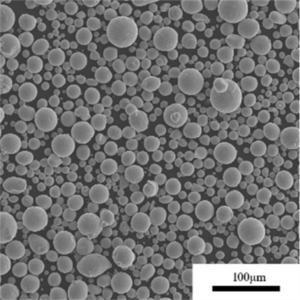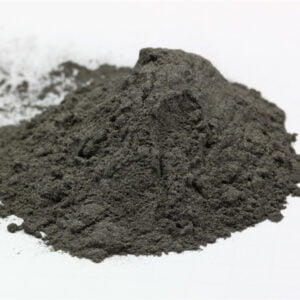Pulver för additiv tillverkning
Innehållsförteckning
Översikt över Pulver för additiv tillverkning
Pulver för additiv tillverkning avser metallegeringsmaterial som produceras i pulverform specifikt för 3D-utskriftstekniker som selektiv lasersmältning (SLM), direkt metallasersintring (DMLS), elektronstrålesmältning (EBM) och bindemedelssprutning. Den optimerade partikelstorleksfördelningen, morfologin, kemin och pulveregenskaperna underlättar exakt sammansmältning lager för lager till komponenter för slutanvändning.
Tabell 1: Översikt över pulverattribut för additiv tillverkning
| Attribut | Beskrivning |
|---|---|
| Råmaterial | Sfäriska partiklar av metallegering |
| Produktionsmetoder | Gasatomisering, elektrolys, karbonyl |
| Använda material | Titan, aluminium, rostfritt stål, superlegeringar, verktygsstål |
| Partikelstorlekar | 10 - 45 mikrometer typiskt |
| Viktiga egenskaper | Flytbarhet, densitet, mikrostruktur, renhet |
| Primära tillämpningar | Flyg- och rymdindustrin, medicinteknik, fordonsindustri, industri |
Tack vare noggrann kontroll över egenskaper som partikelform, storleksfördelning, kemi och mikrostruktur kan AM-pulver flyta smidigt, packas tätt och smälta samman lager efter lager för att skapa intrikata, robusta metallkomponenter med mekaniska egenskaper som matchar eller överträffar traditionella tillverkningsvägar.
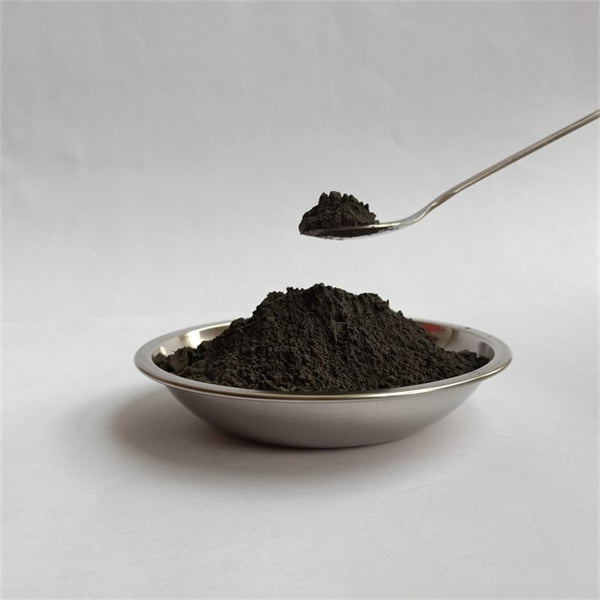
Metoder för produktion av metallpulver för AM
Additiva pulver använder flera primära produktionsvägar för att generera fina sfäriska pulver med önskad kemi, kornbildning, ytmorfologi, porositetsnivåer och partikelfördelningsspecifikationer som krävs av AM-processer.
Tabell 2: Jämförelse av metoder för produktion av pulver för additiv tillverkning
| Metod | Beskrivning | Fördelar/Nackdelar |
|---|---|---|
| Atomisering av gas | Gas under högt tryck bryter upp smält metallström i droppar | Enhetliga partiklar, flexibilitet i legeringen Nackdelen är högre kostnad |
| Plasmaatomisering | Elektrodbågen smälter/splittrar metaller till partiklar | Mycket sfäriskt pulver, små partier |
| Hydrid-dehydrid | Legeringspulver förfallit genom väteabsorption | Mycket fina pulver med god flytbarhet men lägre densitet |
| Elektrolys | Metallråvara löses upp från anoden till pulver | Lägre kostnad men oregelbundna flikiga former |
I takt med att AM-hårdvaran utvecklas och möjliggör finare upplösningar ned till 20 mikrometer, blir det viktigt med snävare partikelstorleksfördelningar för pulver mellan 15 och 45 mikrometer - vilket kräver större gas- och plasmaatomisering för att underlätta sfäriskt meteoritpulver som är idealiskt för tät packning och jämn krattning.
Genom att matcha produktionsrutten mot kraven i den avsedda AM-processen säkerställs optimala pulverspecifikationer som balanserar prestandakraven.
Olika typer av pulver för additiv tillverkning av metall
Olika metallegeringar som produceras i pulverform används nu i stor utsträckning inom AM-tekniker, från billiga polymerer till dyra eldfasta superlegeringar, tack vare ökad designfrihet som underlättar konsolidering av delar och förbättrade egenskaper som överskrider gränserna för gjutning eller maskinbearbetning.
Tabell 3: Vanliga metallpulvermaterial som utnyttjas för AM
| Materialklass | Legeringstyper | Beskrivning |
|---|---|---|
| Aluminiumlegeringar | AlSi10Mg, AlSi7Mg | Lättviktskoncept inom flyg- och fordonsindustrin |
| Titanlegeringar | Ti-6Al-4V, Ti 6Al4V ELI | Höghållfasta implantat för flyg och biomedicin |
| Rostfria stål | 304L, 316L,17-4PH | Korrosionsbeständighet för marin utrustning |
| Verktygsstål | H13, Maraging 300 | Skärverktyg och formar med extrem hårdhet |
| Superlegeringar av nickel | Inconel 718, Inconel 625 | Turbomaskiner som flygplansmotorer |
| Exotiska legeringar | Koppar, kobolt, krom, volfram | Anpassade kompositioner tänjer på gränserna |
Den optimerade pulverbäddsfusionsmiljön underlättar bearbetning av traditionellt utmanande materialsammansättningar bortom konventionella tillverkningshinder. Detta möjliggör innovationer inom värmehantering för elektronikförpackningar, olje- och gasventiler och pumpar för extrema miljöer, komponenter för bilracing och satellitutrustning.
Genom att noggrant välja optimala legeringar utifrån designprioriteringar som vikt, kostnad, hållfasthet och miljökompatibilitet kan man skapa högpresterande additivt tillverkade detaljer som inte kan matchas av äldre processer.
Viktiga egenskaper hos pulver för additiv tillverkning
För att säkerställa en jämn och effektiv materialdeponering, vilket är avgörande för att uppnå täta, defektfria tryckta komponenter, måste pulverprodukter för additiv tillverkning uppfylla stränga krav avseende flödesegenskaper, skenbar densitet, restporositet, mikrostrukturer och kontamineringsgränser.
Tabell 4: Typiska egenskaper för AM-pulver av metall
| Karaktäristisk | Typiska värden | Testmetoder | Betydelse |
|---|---|---|---|
| Morfologi för pulver | Slät nästan sfärisk | SEM-avbildning | Packning och flöde i pulverbädd |
| Fördelning av partikelstorlek | 10μm - 45μm | Laserdiffraktionsanalys | Lagerupplösningar, bygga hastigheter |
| Skenbar densitet och tappdensitet | 65-80% / 80-92% respektive | Gravimetriska mätningar via Hall-flödesmätare | Upplösning och kvalitet på utskriften |
| Flödeshastigheter | 23-33 sekunder för 50 g | Tidsbestämda trattprov | Spridningsförmåga för pulver |
| Återstående porositet | <1% | Pyknometri för gas | Densitet och mekaniska egenskaper |
| Ox/N-förorening | <1000 ppm / <500 ppm | Analys av inerta gaser | Återanvändning av pulver, undvik krackning i processen |
Verifiering av kritiska pulveregenskaper vid produktion med hjälp av avancerad instrumentering underlättar repeterbarhet och övervinner avvikelser i egenskaper från batch till batch med hjälp av statistiska processjusteringar i realtid.
Matchning av väl karakteriserat pulver med stabila skapelseprocesser mot snäva maskintoleranser säkerställer tillförlitliga AM-produktionskörningar.
Specifikationer för Pulver för additiv tillverkning av metall
För att säkerställa högkvalitativa komponenter från AM-hårdvarusystem måste pulver av metallegeringar uppfylla strängare kemikontroller och dimensionsfördelningar jämfört med konventionell pulvermetallurgi som endast är avsedd för komprimering och sintring.
Tabell 5: Typiska värden för specifikation av additivpulver
| Parameter | Gemensamt sortiment | Testmetod | Betydelse |
|---|---|---|---|
| Fördelning av partikelstorlek | 15μm - 45μm | Laserdiffraktion | Kontrollerar minsta funktionsupplösning |
| Elementära föroreningar | <1000 ppm | ICP-spektroskopi | Förhållanden för återanvändning av pulver |
| Skenbar densitet | 65-85% teoretisk | Gravimetrisk analys via Hall-flödesmätare | Påverkar mekanisk prestanda |
| Tappdensitet | 80-95% teoretisk | Gravimetrisk analys | Packningsförhållanden för lager |
| Hall flödeshastighet | <40 sekunder för 50 g pulver | Tidsbestämt tratt-test | Konsistens vid spridning av pulverbädd |
| Partikelns form | >80% sfärisk | SEM-avbildning | Power bed fluidisering jämnhet |
| Återstående porositet | <1% | Pyknometri för gas | Densitet och mekaniska egenskaper |
Övervakning av avancerade formler för Uniformity Coefficient och Flow Rate Ratio som utvecklats för AM-pulver av metall ger djupare insikter än enbart Hall-flöde och säkerställer tillförlitliga applikationsprestanda.
Och genom att skräddarsy storleksfördelningar underlättar pulverkemikalier aktivt processförbättringar som ger finare upplösningar, snabbare bygghastigheter och längre oavbrutna produktionskörningar, vilket är avgörande för införandet av AM.
Grader och standarder för pulver för additiv tillverkning
I takt med att additiv tillverkning tränger in i reglerade miljöer som omfattar flyg-, medicin-, fordons- och industrikategorier blir standardiserade metoder för att specificera, testa, certifiera och kontrollera metallpulver avgörande för att säkerställa repeterbarhet, kvalitet och säkerhet.
Tabell 6: Nya standarder för AM-pulver av metall
| Standard | Omfattning | Syfte |
|---|---|---|
| ASTM F3049 | Standardguide för karakterisering av AM-pulver | Fastställa testmetoder för bedömning av gemensamma pulveregenskaper |
| ASTM F3056 | Specifikation för pulver av nickellegeringar | Kemi, tillverkning, omprövningsfrekvens |
| ASTM F3301 | Övning för metoder för sekundära processer som tillämpas på AM-delar | Ange godtagbara tekniker för efterbearbetning |
| AS9100 rev D | Godkända leverantörer inom flyg- och rymdsektorn | Kvalitetssystem för reglerade branscher |
| ISO/ASTM 52921 | Standardterminologi för AM - samordnas med globala normer | Säkerställa enhetlig terminologi och specifikationer för AM-pulvermaterial |
I takt med att AM tränger in i allt fler kommersiella industrier och försvarsindustrier med krav på strikt verifiering och spårbarhet av detaljer, blir standardiserade testmetoder, dokumentation av spårbarhetskedjan, provtagningsfrekvenser för partier, miljökontroll av anläggningar och personalutbildning obligatoriska. Efterlevnad säkerställer att användarna har fullständig materialstamtavla och processtransparens, vilket underlättar den rigorösa kvalificering som förväntas i kritiska applikationer.
Myndigheter stöder också den pågående utvecklingen av materialspecifikationer, testtekniker och bästa praxis i takt med att AM utvecklas på olika marknader. Samarbetet mellan pulvertillverkare, OEM-tillverkare av skrivare och industriella användare kommer att fortsätta att driva fram bättre benchmarking som förbättrar prestanda och tillförlitlighet i verkligheten.
Tillämpningar av metalltillsatsmedel i pulverform
Tack vare den växande kapaciteten hos skrivarsystemen och tillgången till optimerade pulver för AM-behov förändrar additiv tillverkning produktionsekonomin i många branscher, från flyg- och rymdindustrin till konsumentvaror.
Tabell 7: Primära pulverapplikationer för additiv tillverkning av metall
| Sektor | Exempel på tillverkningsprocess | Fördelar med kostnad/prestanda |
|---|---|---|
| Motorer för flyg- och rymdindustrin | Munstycken och grenrör i Inconel 718 via DMLM | Kortare ledtider, förbättrat förhållande mellan inköp och flygning |
| Turbiner för flyg | Ti64 strukturella fästen via EBM | Viktbesparingar, konsolidering av delar |
| Biomedicinska implantat | Ortopediska produkter av koboltkrom med DMLS | Ökad benintegreringsgrad |
| Bilracing | Kundanpassade legeringar och geomtrier via SLM | Hög värme-/vibrationsbeständighet och viktbesparingar |
| Lyxiga klockor | Mikrokomponenter av guld och stål genom SLM | Frihet i design/styling och snabba iterationer |
Tack vare utökade materialalternativ och större tillgängliga byggvolymer kan AM-metall omvandla produktionshinder som konventionella processer står inför - vilket möjliggör högre hållfasthet, lägre vikt, förbättrad värmetålighet genom generativa kylkanaler, konsolidering av delar samt kortare totala ledtider.
Dessa tillverkningsfördelar stimulerar införandet av AM-tekniker som ersätter traditionell produktion i kostnadskänsliga branscher när stordriftsfördelarna realiseras. Fortsatt materialinnovation lovar utökade tillämpningar i ännu mer extrema kemiska, tryck-, korrosiva och belastande miljöer.
Leverantörer av AM-pulver av metall
Ett brett utbud av pulvertillverkare levererar nu specialiserade metallmaterial som tillgodoser behoven inom additiv tillverkning, från startutrustning för mindre verkstäder till stora tier 1-leverantörer inom flygindustrin och innovatörer av speciallegeringar som flyttar fram gränserna för AM-kapaciteten.
Tabell 8: Ledande leverantörer av metallpulver för tillsatsmaterial
| Företag | Portfölj | Beskrivning |
|---|---|---|
| Praxair | Titan-, nickel- och koboltlegeringar | Ledande producent av finfördelade gaser och pulver |
| Sandvik | Rostfria stål | Högpresterande legeringar inklusive duplex- och maråldringsstål |
| LPW-teknik | Aluminium-, titan- och nickellegeringar | Kundanpassade legeringar och bindemedelsprodukter |
| Snickare Tillsats | Verktygsstål, rostfritt stål | Kundanpassade legeringar som utnyttjar ståltillverkningsexpertis |
| AP&C | Titan, nickel superlegeringar | Leverantör av livscykellösningar för pulver |
| Hoganas | Rostfria stål | Högpresterande legeringar inklusive duplex- och maråldringsstål |
Dessa pulverledare samarbetar aktivt inom AM-industrin tillsammans med OEM-tillverkare av skrivare, forskare och standardiseringsgrupper för att kontinuerligt förbättra den dimensionella repeterbarheten, minska porositeten och förbättra den färdiga komponentens estetik och mekaniska specifikationer.
Kostnadsanalys för AM-pulver för metall
Priserna för vanliga AM-pulver av metall varierar kraftigt beroende på sammansättning, produktionsväg, distributionsled, testkrav och inköpsvolymer, men är i allmänhet betydligt högre än för konventionella pulver enbart för press- och sintringstillämpningar.
Tabell 9: Prissättning för metalladditivpulver
| Material | Prisintervall | Kostnadsdrivande faktorer |
|---|---|---|
| Aluminiumlegeringar | $50-120 per kg | Lägre kostnader för insatsmetaller men höga kostnader för gasförstärkare |
| Rostfritt stål | $50-200 per kg | 316L dyrare än 17-4- eller 15-5-kvaliteter |
| Verktygsstål | $60-220 per kg | Högre kostnader för legeringselement |
| Titanlegeringar | $200-600 per kg | Processintensiv utvinning och hantering |
| Superlegeringar av nickel | $200-1000 per kg | Lågt elementutbyte och möjlighet att skriva ut sprickfria kritiska |
| Exotiska som Ta eller W | $500-2000 per kg | Mycket låg global produktionstillgänglighet för närvarande |
Prispremien jämfört med konventionella pulver beror på mycket mindre batchstorlekar, högre materialkostnader och processskillnader som optimerar egenskaper som sfäriskhet och kontrollerad kemi som underlättar AM-behov.
I takt med att skrivaranvändningen ökar kommer ökad konkurrens och tillverkningsskalor sannolikt att gradvis sänka kostnaderna under 5-10 år - enligt den typiska färdplanen för teknikmognad. Men specialkvaliteterna kommer även fortsättningsvis att vara betydligt dyrare, vilket återspeglar den underliggande marknadsdynamiken för metallråvaror.
VANLIGA FRÅGOR
F: Hur föryngras använda/återvunna AM-pulver av metall för ytterligare tryckcykler?
A: Pulver siktas för att avlägsna stora partiklar som överstiger 100 mikrometer, balanseras kemiskt för att återställa syre-/kvävenivåerna och blandas med proportionella jungfruliga material för att säkerställa lämplig återanvändning utan att försämra kvaliteten på den tryckta detaljen.
Q: Vilka kritiska specifikationer skiljer sig mest mellan AM och konventionella presspulver?
S: Smalare partikelstorleksfördelningar på i genomsnitt 25 mikrometer, högre skenbar densitet, jämnare sfäriska meteoritpulverformer och lägre syre- och kvävenivåer gör att AM-behov skiljer sig från traditionell pulvermetallurgi som endast kräver lösare toleranser. Genom att uppnå dessa optimerade egenskaper underlättas defektfri AM-printning.
F: Hur många gånger kan vanliga AM-pulverlegeringar typiskt återanvändas?
S: Liknande superlegeringar av titan och nickel klarar 20 cykler innan de behöver fyllas på med nytt pulver. Billigare rostfria stål kan nå 50+ återanvändningscykler. Aluminium och mycket reaktiva kvaliteter har de mest begränsade återvinningstiderna under 5 cykler.
F: Vilka möjligheter till förbättrade egenskaper finns med AM-pulver av metall jämfört med befintliga material?
A: Genom att kombinera förhöjda styrke-/viktförhållanden med tunnare/ ihåliga profiler med inbäddade kanaler som underlättar vätskeflöde, värmeöverföring eller strukturell förstärkning, kan generativa designkonfigurationer skapas som revolutionerar tillverkade komponenter som inte kan tillverkas enbart med subtraktiv bearbetning eller enstegsgjutning.
F: Vilka branschkategorier är för närvarande mest lovande för tillväxt inom AM-pulver för metall?
S: Flyg-, medicinteknik-, fordons- och olje-/gassektorerna leder den tidiga mainstream-expansionen tack vare komponenter med högt värde som motiverar FoU-investeringar. Men på längre sikt väntas masstillämpningen förbättra hållbarheten hos konsumentvaror genom att utnyttja AM:s flexibilitetsfördelar när systemkostnaderna sjunker.
Dela på
MET3DP Technology Co, LTD är en ledande leverantör av lösningar för additiv tillverkning med huvudkontor i Qingdao, Kina. Vårt företag är specialiserat på 3D-utskriftsutrustning och högpresterande metallpulver för industriella tillämpningar.
Förfrågan för att få bästa pris och anpassad lösning för ditt företag!
Relaterade artiklar

Högpresterande segment för munstycksvingar: Revolutionerande turbineffektivitet med 3D-utskrift i metall
Läs mer "Om Met3DP
Senaste uppdateringen
Vår produkt
KONTAKTA OSS
Har du några frågor? Skicka oss meddelande nu! Vi kommer att betjäna din begäran med ett helt team efter att ha fått ditt meddelande.

Metallpulver för 3D-printing och additiv tillverkning
FÖRETAG
PRODUKT
cONTACT INFO
- Qingdao City, Shandong, Kina
- [email protected]
- [email protected]
- +86 19116340731






